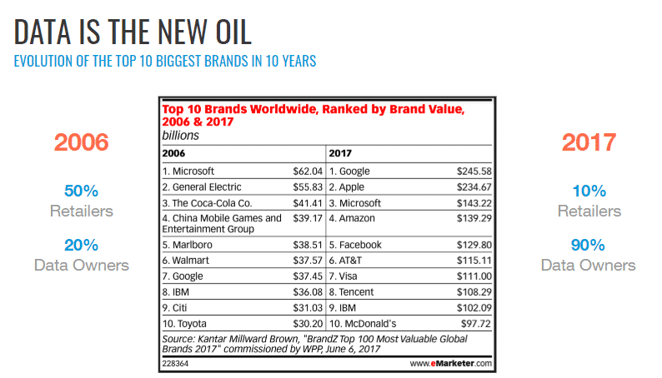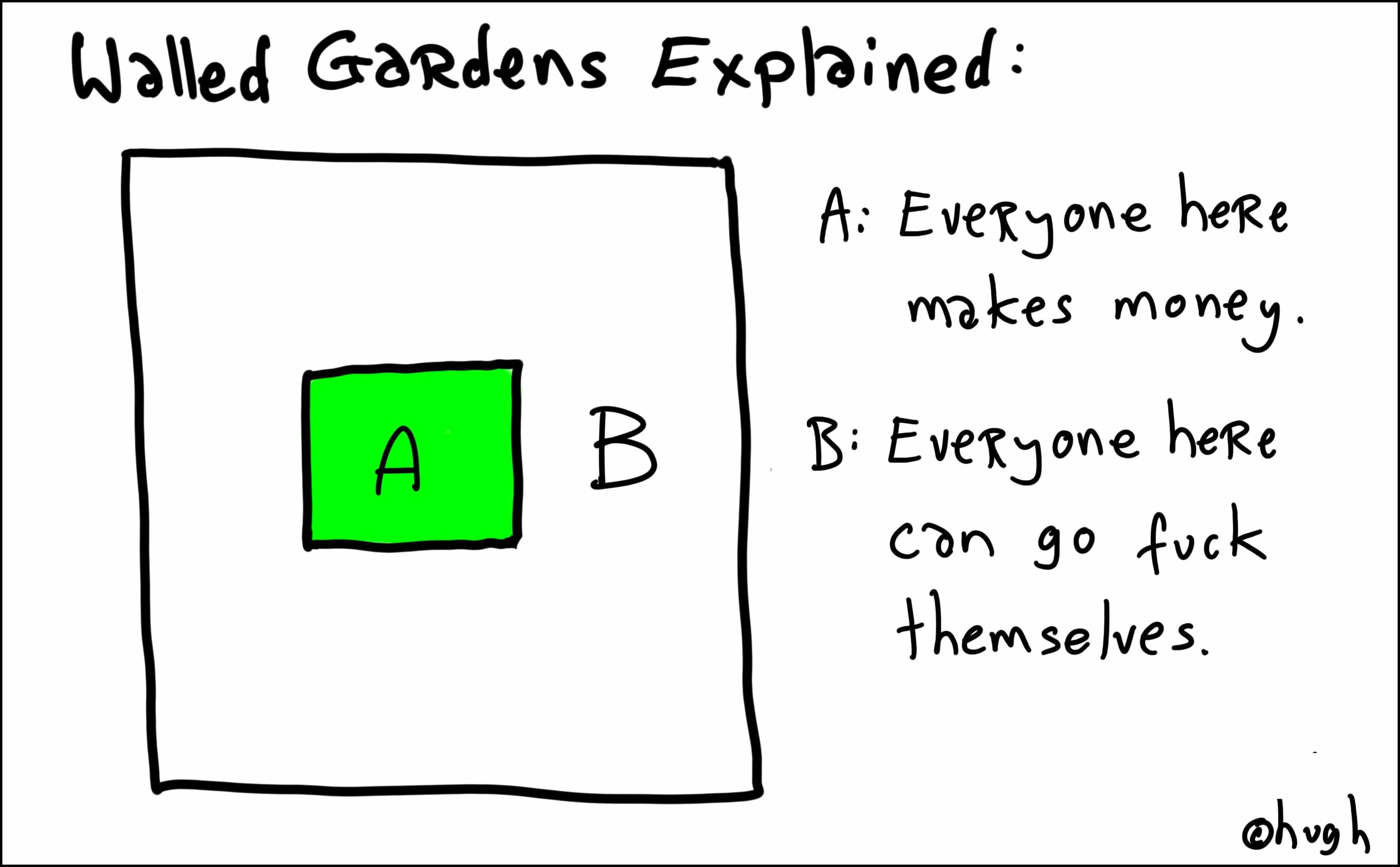Team Lead Data & Intelligence
The slippage of third-party audiences
Team Lead Data & Intelligence
The use of data in digital marketing is really nothing new, especially when it comes to third-party audiences. What if, all this time, we had been on the wrong track? Where are we supposed to be as marketers?
SHOW ME YOUR DATA, AND I'LL TELL YOU WHO YOU ARE
Look, honey, I traced the route from our first date!
- Me
Romantic, right? At least that's what I thought. To mark our first anniversary of meeting, I found and superimposed on a map the geolocated chronological data of all our movements from the first day that my wife and I spent together. Admit that it was romantic! She didn't seem of the same opinion. Being a social worker (and therefore not in marketing), she was rather outraged by what we marketers consider to be “innocuous” data, and the ease with which it can be accessed. From there ensued an interesting conversation – as always.

I had had no trouble finding all the places she had been to day after day, and up to quite a long time! The CIA and the KGB would have loved to have access to this kind of data in the 1980s ( this is also the reason why Apple defends itself so much against allowing the authorities to have access to the data of its users. ) Was I a controlling spouse? Be that as it may, the fact is that I had the tools necessary to monitor in detail and without his knowledge his schedule and his every coming and going. Rather disturbing, all things considered !
THE USE OF DATA IN DIGITAL MARKETING
Now let's transpose this anecdote to the industry of individual behavioral data and its use for commercial purposes. Because that is how data providers use them. Especially third party data providers. As for digital marketers, having access to this data boosts their prestige in the eyes of senior executives, especially when it's integrated into a groundbreaking ad campaign presentation laced with arcane MarTech jargon .
Of course, when we ask digital advertisers that we are Orwellian about such targeting practices (e.g. tailoring ads shown to users of a brand based on location data showing they have recently made purchases from a competitor), we always brandish, reluctantly, the good old argument: “Don't worry, we only use anonymized data; we would never personally identify an individual. That said, just because we choose not to do it doesn't mean we can't do it!
As marketers, we may not be those who relentlessly stalk users wherever they go, but we are nonetheless becoming enablers of our growing performance demands in advertising. A file from the New York Times describes the situation well:
Now is the time to take a step back – especially after the recent announcement of the cookie apocalypse on the horizon – and do some soul-searching as marketers: how did we get here ?
THE EVOLUTION OF DATA SEGMENTATION
When I started in advertising, behavioral marketing was all about targeting someone with a particular behavior on a website – for example, spending a lot of time in a particular section of content.
The segments that emerged could be as generic as “avid news readers” or “sports fans”.
It worked, and life was good. Advertisers could reach quality visitors without rolling out the red carpet. They could even sell outdoor gear to sports fans in the “Horoscope” section of a site. The customers were satisfied, the results were there… and the publishers took advantage of this to sell off stocks of unsold advertising space. Everyone was winning.
New modes of behavior then made their entrance: we no longer target only behavioral data as such, but also (or above all) purchase intentions, current and past. Remarketing then jumped to the fore . Anyone looking for a ticket to Cuba? We offered him a flight to Cuba! It was more innovative than anything at the time. And customers were happier than ever.

THE LINE NOT TO CROSS
And the crazy adventure continued, further, always further. So far that it is impossible for me to tell it in detail. Let's just say that our research on the subject, as of 2014, allowed us to target you based on…
- the distance separating your residence from a city;
- your flight departure time;
- the type of credit card you used;
- your choice to check an animal on a flight;
- your marital status...
and all of this at the same time! The phrase “Just because we can do it doesn't mean we have to” took on its full meaning.
Data vendors had a strong case:
Our state-of-the-art machine learning algorithms, designed by our own PhDs in Computer Engineering, incorporate the most sensitive data points on the market, ensuring you get the best possible performance!
And to make sure to integrate the greatest number of data points, they began to monitor absolutely all Internet connections, until they became real beacons. The nine largest companies in the field have quickly become the data oligarchs.

In short, cell phones have become everyday advertising GPS. And if that weren't enough, some of the oligarchs have started listening to your conversations. I'm not just talking about the Google Assistant, Alexa or Siri. Studies dating back four years, like this one , report 247 SilverPush Android apps listening in on users' devices for background conversations! WeVibe, a company of high-end sensual products (like smart dildos) even attempted to collect user data through its mobile app. (We agree that there are limits! What happens in the bedroom must stay there . People have taken it very badly .)
Data is about to become (or became in 2006 ) the new oil , and the marketing technology giants are already taking advantage of it. Why do you think Google gave all of its paying users and Spotify Premium customers a free Google Home Mini just before the 2019 holiday season? Can we better “listen”? What about, fellow Gmail users, email privacy? Remember, if it's free, you're the product .
THE SUPREMACY OF COOKIES
The world of advertising has become a Big Brother universe where everyone tries to pull the rug out from under everyone else to gain an advantage. Monitoring cookies started popping up everywhere, without brands even realizing that their visitors' data was being stolen from their platforms in exchange for enticing campaign performance.
All powered by a desire for better results…and more cookies to achieve this – these famous anonymized cookies that accompany our online browsing. Anonymized? Wait a minute. As soon as the information of a witness can be matched with that of another witness, it becomes possible to trace links. However, collecting, processing and sharing (selling) these links made the golden days of advertising based on third-party audiences. In plain language, data reselling companies took information about potential customers, molded it into usable form, and sold it to marketers to enable them to deliver better results to decision makers. How could such a simple transaction come to raise so many confidentiality issues?
The fact is that the lack of confidentiality is very real. It's as if your employer started by using radio frequency identification technology (a card reader, for example) to track your entries and exits from the office. What if, for the sake of efficiency, it later decides to also log your use of the kitchen, then, one day, requires you to use your card every time you consult a file online. Couldn't be more Orwellian!
DATA AND COOKIES – A NEW HOPE
Big Brother-style surveillance won't end with the cookie apocalypse . It will only increase with the evolution of technologies, as in the case of telecoms which draw information from data packets transmitted by cable in the United States. (In Canada, we have privacy law, but it doesn't solve everything . ) If you believe Facebook and Google hold a lot of your personal data, consider what Verizon, AT&T, and Comcast may soon be able to do . in the United States , and perhaps even one day in Canada in the event – which is very unlikely – that they prevail against the CRTC. Connected TVs themselves harbor technology that collects a huge amount of data from their users .
Do not despair advertisers and agencies! The coming devastating storm of third-party audiences won't mark the end of high-yield advertising for digital service providers. It will simply reshape the market. Walled data gardens will in fact grow in size by strengthening their borders to better integrate them into their ecosystems. Could local publishers take advantage of this to band together, structure their common data and start offering their own audience-enabled “yield platform”? Fingers crossed! Their situation is beyond the scope of this article, but it should be noted that they are the ones who have lost the most in the onslaught of third-party audience data.
The bottom line: the data oligarchs are pulling up the ladder and busy securing their fortified data gardens.

There is plenty to think about when it comes to our use of data in digital advertising. Our vision evolves with the times, and we are more inspired than ever to help you make the best choices for the future of your business while ensuring privacy.


-1.png)









